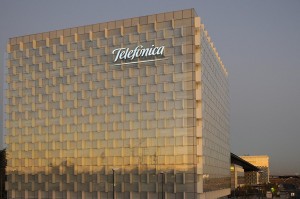
After more than 40 years of operation, DTVE is closing its doors and our website will no longer be updated daily. Thank you for all of your support.
Original ideas
As Europe’s leading telcos post their full-year financial results, Stuart Thomson takes a look at their different content strategies and how they fit into the wider competitive landscape for multiplay services.
 The full-year results for Europe’s leading telecom operators started to hit the headlines this week, with Telefónica, Deutsche Telekom and Orange among the telcos posting FY17 financials.
The full-year results for Europe’s leading telecom operators started to hit the headlines this week, with Telefónica, Deutsche Telekom and Orange among the telcos posting FY17 financials.
An examination of the various TV strategies of these big players is instructive.
Telefónica invested €70 million in original content last year, including €10 million in flagship period drama La Peste, and the Spanish telco was keen to highlight the positive impact of its decision to plough substantial sums of money into original drama production.
Telefónica has a big advantage in going down this route in that it has the opportunity to distribute its raft of series to a large, linguistically unified market spanning Spain and Latin America. The company last week announced that was launching its Movistar Series channel across its substantial Latin American footprint.
It has also previously been reported that Telefónica is mulling the launch of a Netflix-like OTT TV service to bring content to an international audience in Europe.
Whether the company’s TV subscriber growth in Spain is down to the appeal of its originals or the appeal of high-value multi-play bundles remains open to discussion. Perhaps a bit of both. In any case, Telefónica’s Spanish pay TV growth in the fourth quarter was impressive. The company also claimed that La Peste registered the largest audience of any series on its Movistar+ offering to date.
Deutsche Telekom also saw its domestic TV base rise significantly last year, again fuelled by bundling. Telekom has itself invested in exclusive content, though in a more modest way than Telefónica, bringing series including The Handmaid’s Tale, Valkyrien, and Cardinal to its Entertain subscriber base.
Last week saw the German telco acquire the exclusive rights to Fremantle’s Picnic at Hanging Rock and secure Amazon Prime Video as a co-production partner for its first original, comedy drama Germanized.
Orange meanwhile posted respectable TV additions in its financials released this week. While the French telco has a long history of involvement in content creation, CEO Stéphane Richard has fought shy of joining the rush to bet big on original content as a differentiator, preferring to highlight content partnerships with others including Canal+.
However, while these three telecom giants have placed different degrees of emphasis on investing in original content, they share more than divides them. Their principal focus is not on TV but on selling multiplay bundles. This is the field of battle for the residential arms of all Europe’s tier-one telecom players. This is true also for the UK’s BT, which has used the acquisition of premium sports rights to further its goals but which, in the end, fought shy of taking on Sky directly for the status of pay TV leader. The outcome of last week’s Premier League rights auction showed clearly that BT would rather take second place to Sky in pay TV than spend more on acquiring a larger tranche of rights.
Content remains an important part of the overall offering. It is highly useful as a marketing tool and may help maintain or even boost TV ARPU in the face of growing price competition.
But exclusivity has its limits. All Europe’s main operators have proved keen to open up their platforms to third party providers such as Netflix. (Amazon is possibly a different story). Deutsche Telekom and Orange already have well-established deals with the streaming giant in place and even Telefónica, which has gone furthest down the route of differentiation through investment in exclusive drama content, looks set to follow.
Investing in original content is, at the end of the day, a complement to telcos’ multiplay strategies rather than its central pillar.


